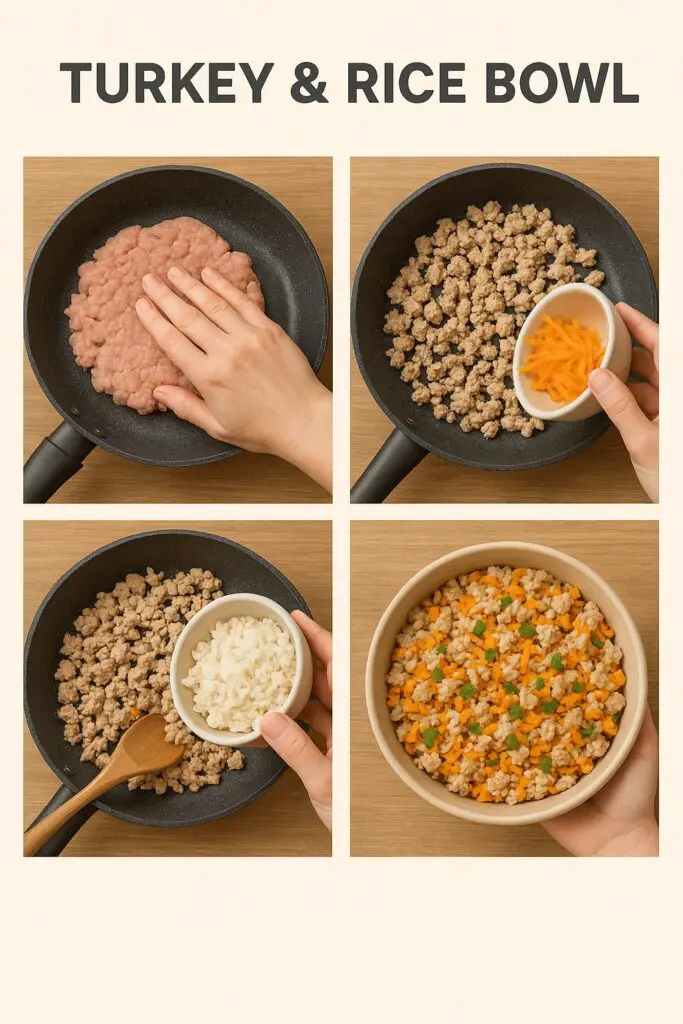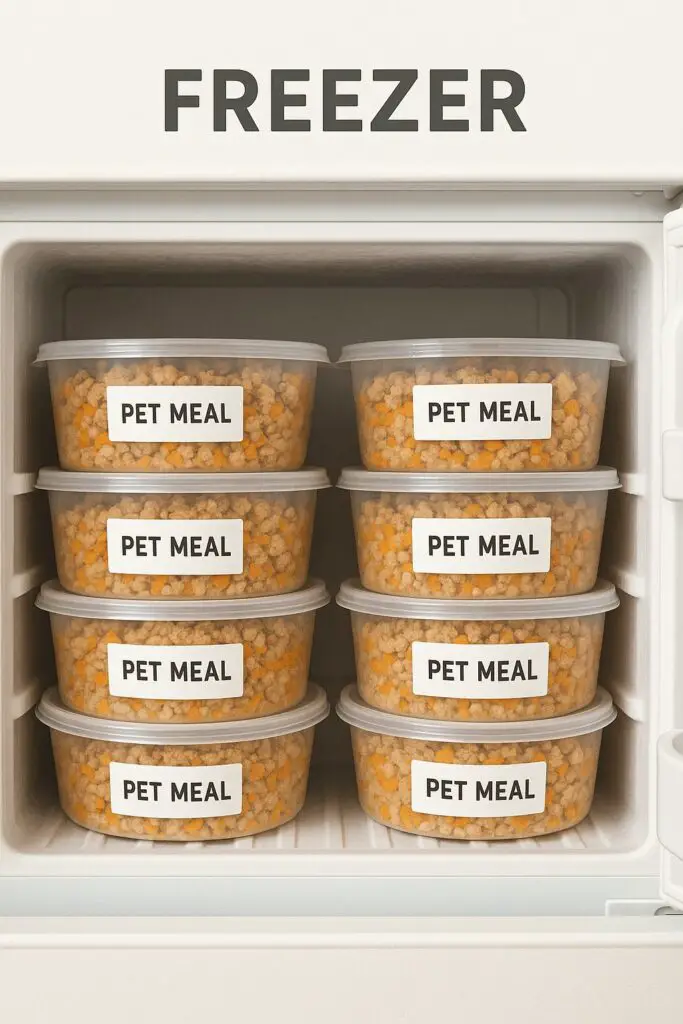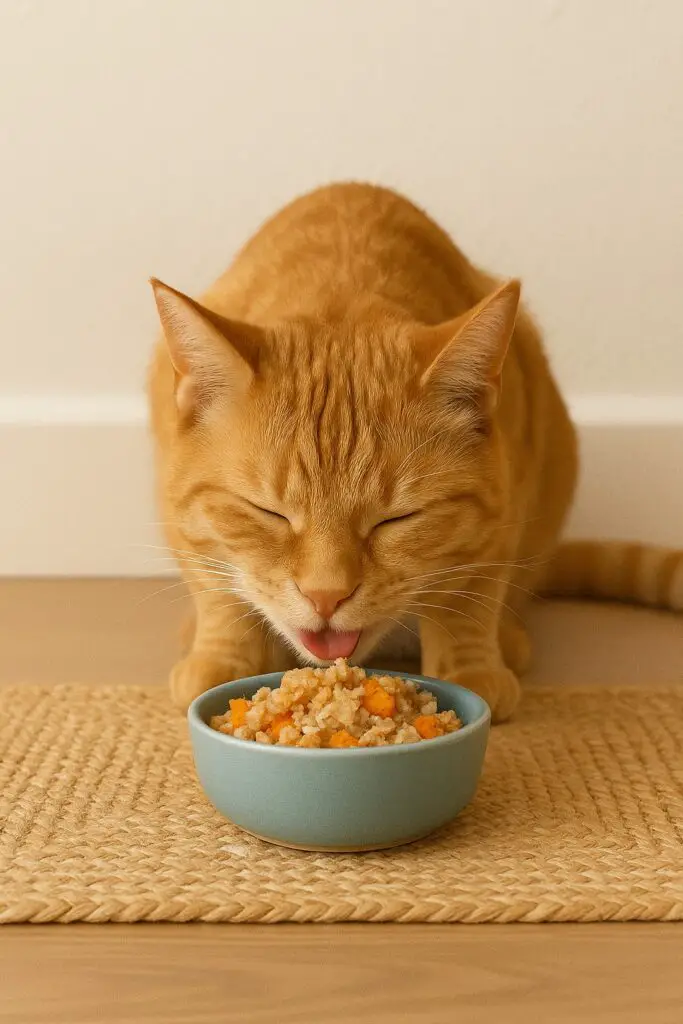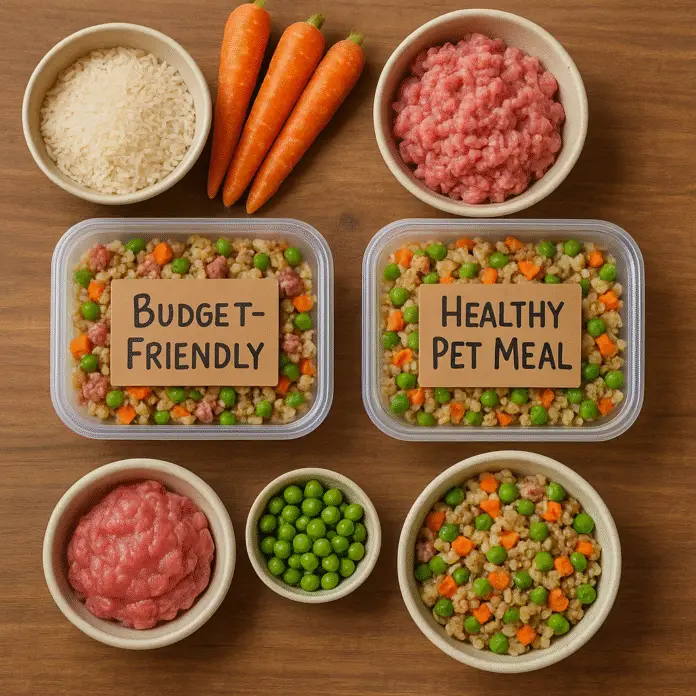Introduction: Why Pet Nutrition Doesn’t Have to Break the Bank
In today’s economic climate, more pet parents are turning to homemade pet food to manage rising costs while still offering their furry companions healthy, balanced meals. With the right ingredients and preparation, you can save money, avoid preservatives, and cater to your pet’s specific dietary needs—all from your own kitchen.
Whether you have a playful puppy, a mellow senior dog, or a picky-eating cat, this guide will show you how to create affordable, nutritious pet meals at home without compromising quality.

The Benefits of Homemade Pet Food
Opting for homemade meals gives you total control over what goes into your pet’s bowl. Here are the top benefits:
- 🐾 Transparency in Ingredients: Know exactly what your pet is eating—no hidden fillers, artificial colors, or preservatives.
- 💸 Cost Savings Over Time: Bulk purchasing and batch cooking reduce the per-meal cost significantly.
- ❤️ Customizable for Allergies & Health Conditions: Pets with sensitivities thrive on diets tailored to their needs.
- 🌱 Eco-Friendly Option: Reduce waste from commercial packaging and utilize leftovers or local produce.
However, before switching entirely to homemade meals, consult a veterinarian or pet nutritionist to ensure your recipes meet all dietary requirements.
Essential Nutrients Every Pet Needs
Feeding pets is not as simple as serving meat alone. A balanced diet should include:

🥩 Protein
Vital for muscle repair and immune function.
Sources: Chicken, turkey, beef, salmon, eggs, cottage cheese.
🥔 Carbohydrates
Provide energy and help digestion.
Sources: Brown rice, sweet potatoes, quinoa, oats.
🥬 Fiber & Vegetables
Support gut health and provide key nutrients.
Sources: Carrots, green beans, pumpkin, peas, spinach (in moderation).
🐟 Fats
Essential for skin, coat, and brain function.
Sources: Flaxseed oil, fish oil, chicken fat.
🧂 Vitamins & Minerals
Critical for metabolic function, bone health, and immune support.
Consider adding supplements like calcium carbonate or pet-safe multivitamins if needed.
Budget-Friendly Homemade Pet Food Recipes
Below are nutritious pet recipes you can easily batch-cook at home:
1. 🦃 Turkey & Brown Rice Bowl (for dogs)

Ingredients:
- 1 lb ground turkey
- 2 cups cooked brown rice
- 1 cup chopped carrots
- ½ cup peas
- 1 tbsp olive oil
Instructions:
- Cook brown rice according to package directions.
- Sauté ground turkey until no longer pink.
- Steam carrots and peas until tender.
- Combine all ingredients, add olive oil, and mix thoroughly.
2. 🐓 Chicken & Sweet Potato Stew (for dogs)
Ingredients:
- 1 lb chicken breast
- 2 cups diced sweet potatoes
- 1 cup green beans
- 2 cups water
- 1 tsp turmeric (optional)
Instructions:
- Boil chicken until fully cooked; shred it.
- Boil sweet potatoes and green beans until soft.
- Combine everything in a pot with water and turmeric. Simmer for 10 minutes.
- Let it cool before serving.
3. 🐟 Tuna & Pumpkin Mash (for cats)
Ingredients:
- 1 can tuna in water (no salt added)
- ¼ cup pumpkin puree
- 1 boiled egg (mashed)
- 1 tbsp fish oil
Instructions:
- Mash all ingredients in a bowl until fully blended.
- Serve immediately or refrigerate for up to 3 days.
4. 🍚 Rice, Egg & Veggie Mix (for pets with sensitivities)
Ingredients:
- 1 cup cooked rice
- 1 boiled egg (chopped)
- ½ cup chopped zucchini
- 1 tbsp cottage cheese
Instructions:
- Steam the zucchini until soft.
- Mix all ingredients until fully incorporated.
- Portion according to your pet’s size.
How to Keep Costs Low
🛒 Smart Shopping Tips
- Buy in Bulk: Choose large bags of rice, oats, and frozen veggies to reduce unit costs.
- Use Store Brands: Generic versions of meat and produce are often just as nutritious.
- Check Local Markets: Farmers’ markets or butchers may offer meat scraps or seasonal produce at lower prices.
- Use Leftovers Safely: Plain cooked meats and veggies from your meals (no seasoning or onions) can be reused.
❄️ Batch Cooking & Storage
- Cook a week’s worth of meals in one go.
- Use resealable freezer bags or containers to store individual portions.
- Label meals with date and contents to ensure freshness.

Potential Pitfalls (and How to Avoid Them)
While feeding your pet at home has many benefits, it’s important to avoid these common mistakes:
- Not Balancing the Diet: A meat-only diet lacks calcium, fiber, and other essential nutrients.
- Using Unsafe Foods: Onions, garlic, grapes, chocolate, and xylitol are toxic to pets.
- Failing to Adjust for Age or Breed: Puppies, seniors, and active breeds have different caloric and nutrient needs.
Vet-Approved Tips for Homemade Feeding
- ✅ Rotate Proteins: Switching between meats helps avoid allergies and nutrient gaps.
- ✅ Weigh Your Pet Monthly: Helps track if they’re maintaining a healthy weight.
- ✅ Add Probiotics or Supplements: For gut health and immune support.
- ✅ Hydration Matters: Include moisture-rich ingredients or supplement with bone broth.
Is Homemade Food Right for Every Pet?
It depends on your lifestyle and your pet’s needs. Homemade food is best suited for:
- Pets with known allergies or sensitivities
- Owners looking to reduce food bills
- Families who enjoy cooking and prepping
If you travel often or need convenience, combining homemade food with a quality kibble or wet food can be a good compromise.
Final Thoughts
Feeding your pet homemade meals on a budget is absolutely possible—and even fun. With thoughtful planning, you’ll ensure your pet is nourished, satisfied, and thriving without overspending. Always introduce new foods gradually and monitor your pet’s response to ensure their continued health.
Happy cooking and even happier tails!





My brother suggested I might like this blog. He was entirely right. This post actually made my day. You cann’t imagine simply how much time I had spent for this information! Thanks!